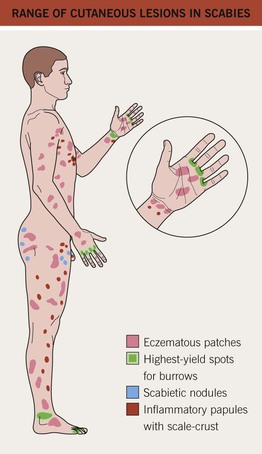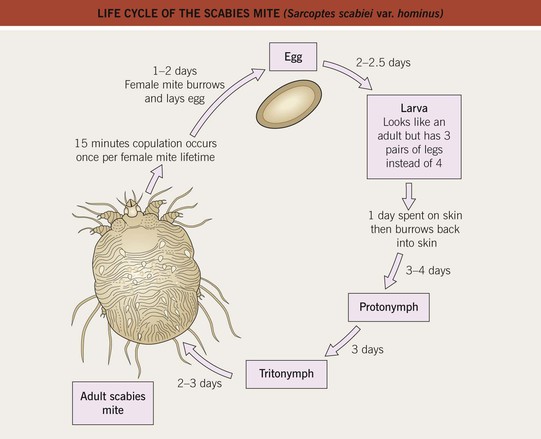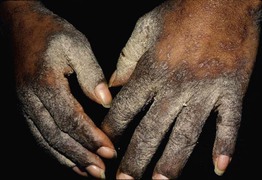71
Infestations
Scabies
• Infestation by Sarcoptes scabiei var. hominis, a mite that lives within the stratum corneum of human skin (Fig. 71.1).
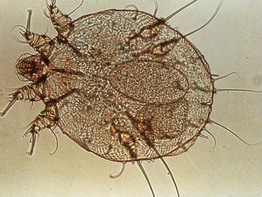
Fig. 71.1 Female scabies mite with egg. The female scabies mite in a potassium hydroxide wet mount obtained from skin scrapings, revealing a flattened, oval body with wrinkle-like corrugations, eight short legs, and an egg ready for deposition (40×). With permission from Taplin D, Meinking TL. Infestations. In: Schachner LA, Hansen RC (Eds.), Pediatric Dermatology, 4th edn. Edinburgh, UK: Mosby, 2011:1141–1180.
• Asymptomatic infestation by scabies is not uncommon (‘carriers’ of scabies).
• Skin lesions are variable and include erythematous papules with scale-crust, small patches of eczema, excoriations, vesicles (especially acrally in infants), and nodules; the classic burrow – a thread-like, grayish-white, wavy, 1- to 10-mm linear structure – favors acral sites (Figs. 71.2 and 71.3).
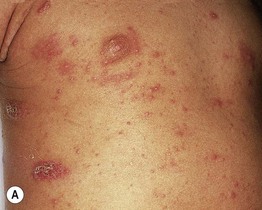
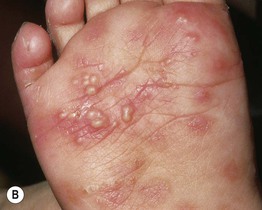
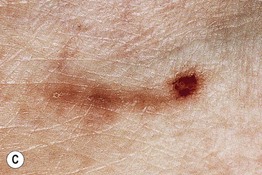

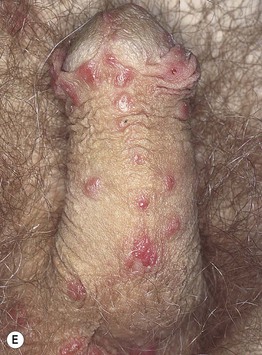
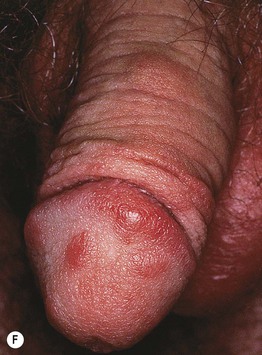
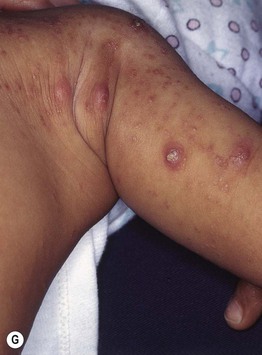
Fig. 71.2 Scabies. A, B Erythematous papules, linear burrows, areas of crusting and acral vesiculopustules in two infants with scabies. C Close-up of a linear burrow post scraping for examination under mineral oil. D By dermoscopy, a characteristic ‘jet with contrail’ structure can be identified corresponding to the anterior part of the mite (arrow) and the burrow behind it. E, F Penile involvement with erythematous papules and nodules.G Nodular scabies in an infant. D, Courtesy, Iris Zalaudek, MD; F, Courtesy, Robert Hartman, MD. G, Courtesy, Kalman Watsky, MD.
• Clinical confirmation is by mineral oil examination of skin scrapings (see Chapter 2) or dermoscopy (see Fig. 71.2D).
• Usually <100 mites, but often no more than 10–15, living on an infested individual (Fig. 71.4); there may be thousands of mites in crusted scabies (thick scale, especially acrally, with minimal inflammation), which affects immunocompromised hosts, those with altered skin sensation, and sometimes the elderly (Fig. 71.5).
• DDx: arthropod bites, including bites of animal mites (e.g. Cheyletiella); diseases associated with generalized pruritus (e.g. atopic dermatitis; see Table 4.1); in infants, infantile acropustulosis, which may also occur following successful treatment of scabies.
– All clothing and bedding should be washed in hot water and dried with high heat, or stored in a bag for 10 days (3 days after the second treatment).
– All family members and close contacts should be treated simultaneously, even if asymptomatic.
Stay updated, free articles. Join our Telegram channel

Full access? Get Clinical Tree


